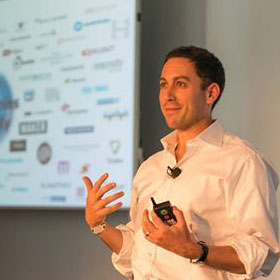Hitting the Wall
Posted on .I was at the Village Ventures Summit in Boston this week, and got to spend time with a group of 30 or so early stage fund managers from across the US. The highlight of the conference was a fireside chat with Fred Wilson, who gave candid feedback about his experiences at Union Square and Flatiron. The low point of the conference was the fundraising panel, when a large fund of funds investor told the room that they should anticipate fundraising for two years on their next fund. That comment inspired this blog post.
The last decade has been tough for VCs. VC fund formations continue to decrease year over year, and for calendar year 2011, the VC business has shrunk to the point that just four funds accounted for 45% of the money allocated to the entire industry. This trend is going to continue because there are problems further up the value chain. The people who invest in venture capital – endowments, fund of funds, sovereign funds, etc – are allocating less money to venture right now.
Angel funds are faring better in the current climate because many of them are financed by individual investors – high net worth individuals who have shifted money away from public markets/real estate and into start-ups. A similar trend happened in the 1990s, and many funds came up short on capital calls when individuals lost interest or found themselves overexposed. It is hard to invest in long term, illiquid companies unless you have institutional money.
A second, albeit related, issue is that most “name brand” VC funds have gotten much larger in recent years. Many of these firms are now multi-strategy, with a combination of seed, early-stage, growth, and pre-IPO investing. This is considered venture capital for purposes of industry classification, although less and less of it is actually venture capital. It is hard to decipher where the chips fall in these large funds, but true early stage money appears to be at a two decade low.
In some ways this trend is healthy. Companies have become much more capital efficient in the last 10 years, with open source software, cloud computing, and outsourcing. This means that less VC money is required to launch a business today. Keeping the industry small will benefit funds that have adjusted to this new environment. However everyone will not successfully make the transition.
I have been a distance runner since high school, and there is a point during every race when it hurts to keep running. This is called hitting the wall, and it is when winners emerge from the pack. In a similar way, I think the venture world has hit the wall. The business has gradually gotten harder – VCs must cover a larger portfolio, take on more travel, spend more time fundraising, and screen more opportunities. It is hard to produce a 20% IRR (3x multiple over 6 years) when the overall economy is experiencing flat growth. But this type of return is out there for early stage investors, and the managers that emerge from the pack will achieve it.

Ian Sigalow
http://sigalow.comIan is a co-founder and partner at Greycroft Partners in New York City. He has been a venture capitalist since 2001.
AUTHOR JonStaurt
Posted on 9:04 am November 13, 2011.
Another new trend in the VC world is the emergence of the pre-IPO fund. Companies like GSVP, MidasLP.com and Keeting are pretty active.